
It is usually without the expletive, but this is a common question, often from other Floridians. Why give up the land of Enchantment for the Sunshine State? Why leave the mountains and blue skies behind? Why trade dust storms for hurricanes, cactus and deserts for St. Augustine lawns? Mountain Lions for alligators, rosy-finches for Palm Warblers, Gore-Tex and Timberlands for T-shirts and flip-flops, swamp coolers for air conditioning, juniper pollen for mold spores and ragweed, four seasons for only two, and so on…
Yes, New Mexico even has an honest kind of dust that you can feel, the grainy stuff that sometimes gets caught in your teeth or the corner of your eye, while our Florida countertops and outdoor furniture gather something much finer– black, bland and insidious.
This spring, South Florida was an amazingly arid place. The dry season rainfall totals hit all-time lows by early May. The water impounded in Lake Okeechobee dropped to under 9 feet above sea level, and has continued dropping despite the onset of the rainy season. This is the lowest water level since the lake was first encircled by levees in the 1930’s, posing the threat of salt water intrusion into our vital Biscayne Aquifer. Lawn watering has been cut to once a week, to the distress of all my fellow manicurists who try to grow grass on the sandy “reclaimed” soil of our subdivision.

I had my newly-acquired Canon Digital Rebel camera, but only brought the telephoto lens that our son-in-law gave me with the camera. (He had been itching to upgrade his equipment, and when the battery door of his Rebel broke it gave him the excuse to upgrade to a professional model, to my great benefit.) Unfortunately, the telephoto was from an earlier film camera that he had, and it misfired about twenty times for every image I obtained.
A Soft-shelled Turtle, depositing its eggs along the tram route, provided me with my only decent image (click here for full-screen view). We saw only a couple of Wood Storks, and smaller numbers of all the common herons, as well as a “Great White Heron” (the white morph of the Great Blue Heron, usually seen only in the Keys), but the Rebel’s shutter failed to operate for all but a few fuzzy shots.
Today a lone Wood Stork appeared on our lake. No mate, no offspring, no photo opportunity. Last September, I digiscoped this one from our rear patio.
Later, I will try to answer the question posed at the outset.
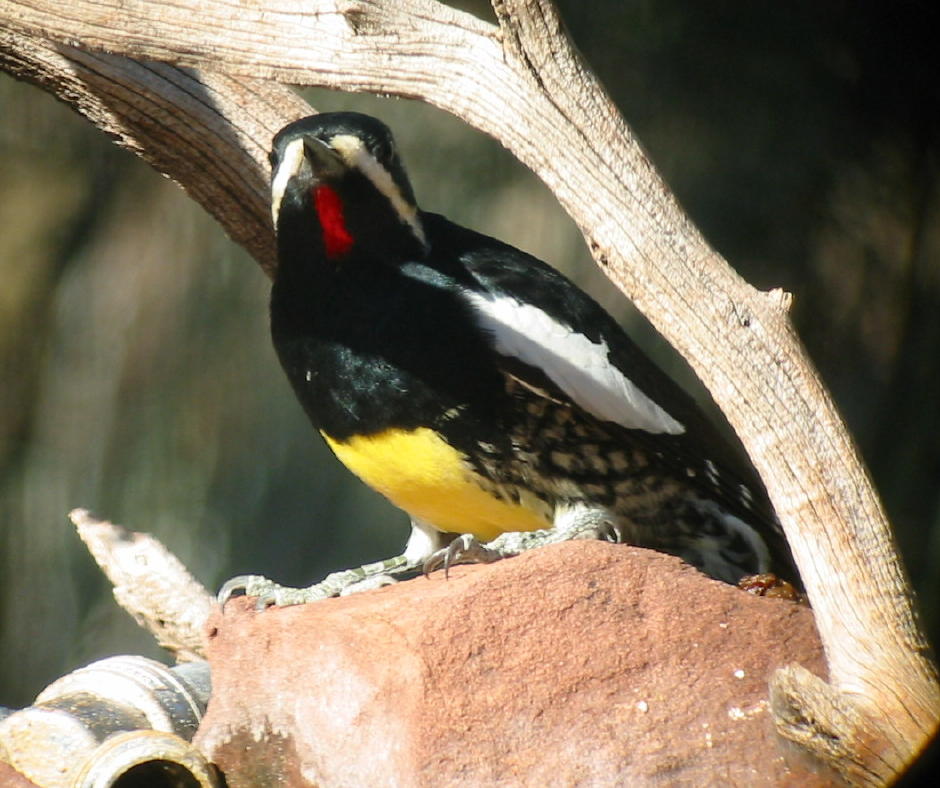
When I collected my New Mexico “Bathing Beauty” gallery I neglected to include a couple of special photos. These two, of the Williamson’s Sapsucker, bring out the stunning beauty of this little woodpecker. He usually visited the water so briefly and infrequently that he was gone before I could set up my cumbersome digiscope. One day he delayed his departure just long enough to provide me with a couple of views that show different aspects of his plumage.
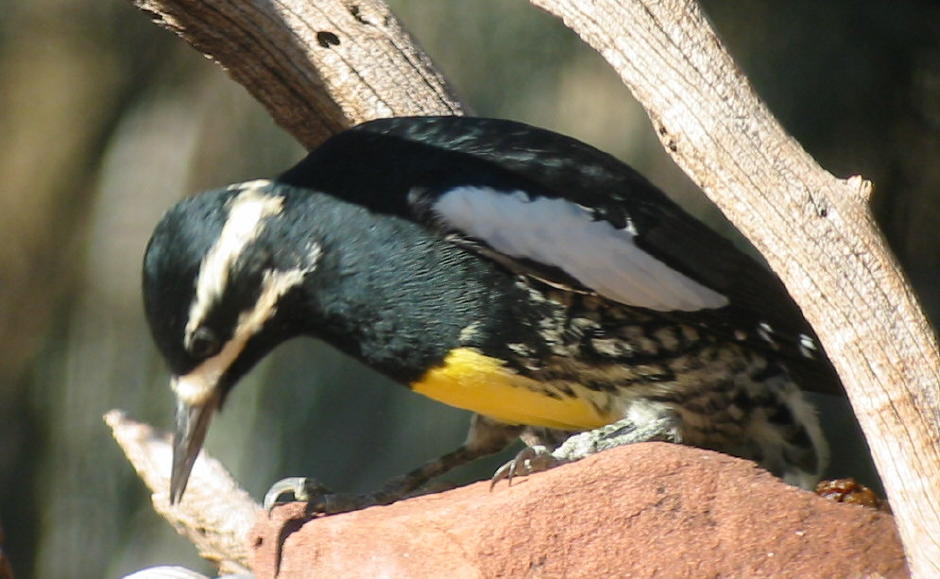
Here, a Northern (Red-shafted) Flicker pauses for a drink.

As a kid in New Jersey, all my flickers had black moustaches, so it was a treat to see red ones when I moved out West. And, of course, all my goldfinches had yellow backs during the summer. We had both American and Lesser Goldfinches in New Mexico, the former species visiting us during most winters.
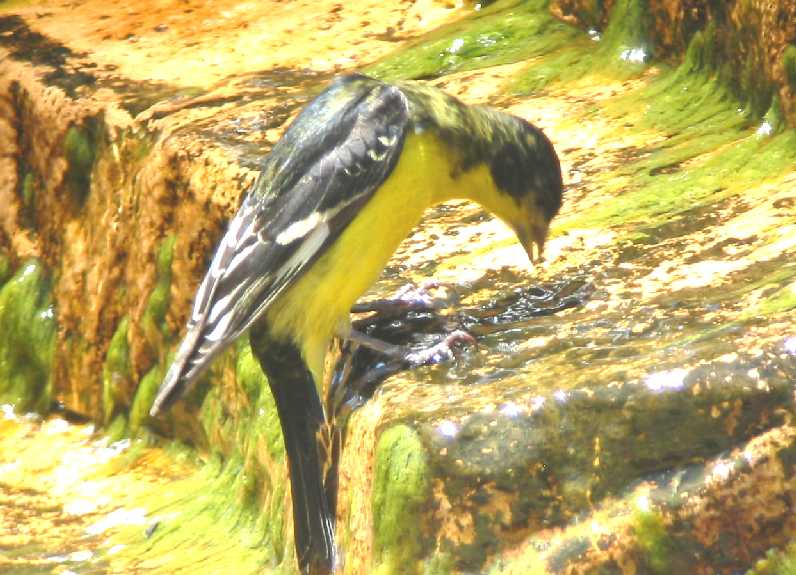
Like its eastern counterpart, the Lesser Goldfinch bred late in the summer and sometimes their hatchlings did not show up until early September.
For sake of comparison, here is one of the few American Goldfinches that showed breeding plumage before departing for northern latitudes.
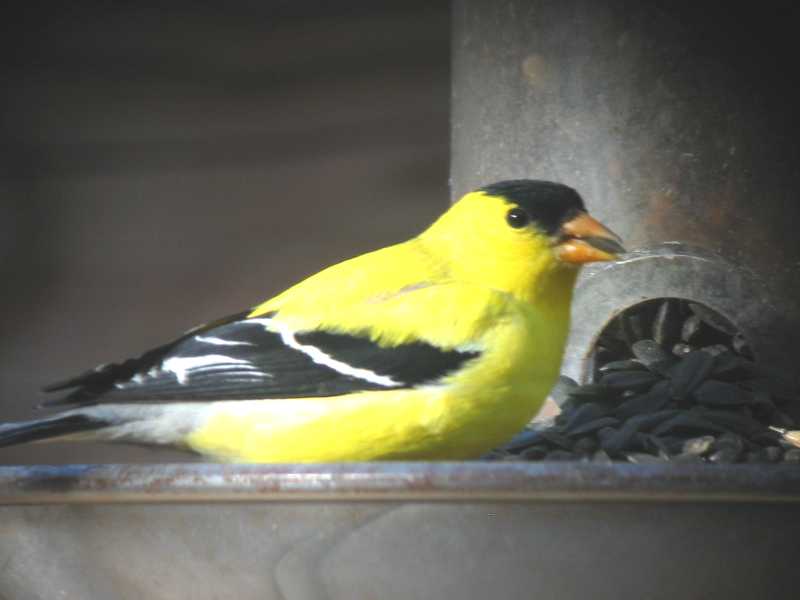
Finally, a Red Crossbill takes a sip.


Laura (Somewhere in NJ) recently mentioned in her Blog that one bathing bird often attracts others. She inspired me to rummage through my photos of bathing birds. How I miss our ponds in the front and back of our New Mexico home! They were one of the few sources of drinking water at 7000 feet in the Sandia Mountains, so they provided me with many photo opportunities. However, most of the opportunities did not result in photos.
The above candid shot was not very flattering to this adult male Bullock’s Oriole.
These pictures were taken from inside our family room, through sometimes dusty windows, using a Kowa spotting scope and a small point-and-shoot Canon A40 camera. Click here to see my makeshift equipment. While the images lacked the detail that would have been possible with more megapixels and better lenses, they did serve to capture some private bathing moments.

This image of a male Western Bluebird is technically very poor, what with the vignetting and the hazy focus, but it surprised me with its subtle beauty. If I had set out to achieve such an artful effect, I am sure I would have failed miserably.
Its mate also appears poorly exposed, but this picture of a female Western Bluebird is one of my favorites:
One day when I was running the garden hose to water a Ponderosa Pine seedling, a Townsend’s Warbler came right up to my feet to drink and bathe. Warblers, such as this Black-throated Gray, were particularly attracted to the water.
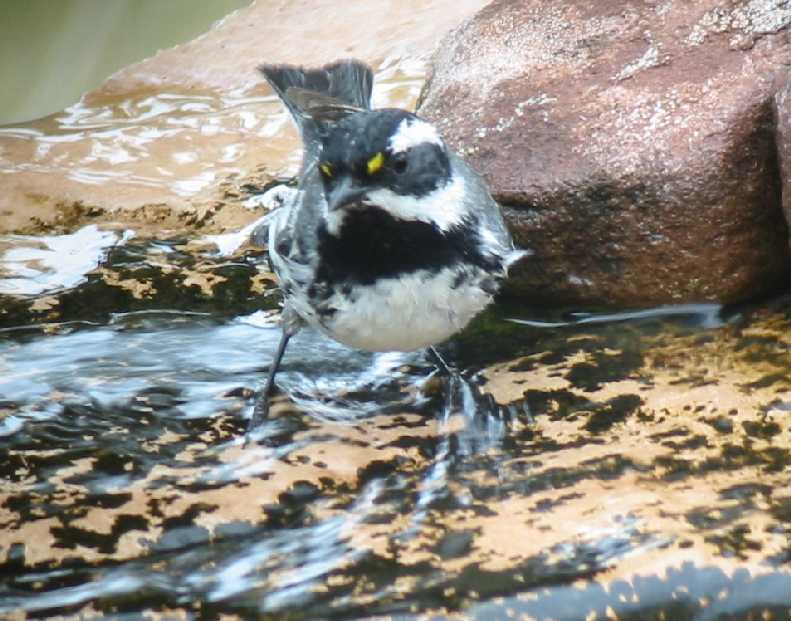
We had many visits from locally breeding Virginia’s Warblers, but their constant motion and the delay inherent in my little camera’s shutter action always made me miss a good pose. I did click at the right time to capture this male Wilson’s Warbler.

Finally, a blurry portrait of part of a family group of Bush-tits.













